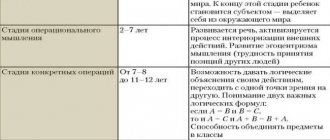Human mental activity is multifaceted. After all, each of us has to face a variety of tasks that require our own, special approach. Imaginative thinking is directly related to a person’s perception of objects in the real world. It occurs in close interaction with other mental processes - memory, attention, imagination.
Does every person have the ability to think figuratively?
The development of imaginative thinking is of interest to many, but there are adults who are not confident in their abilities. It is necessary to understand that in human thinking some processes are carried out visually. Sometimes a person realizes that he operates with his past perceptions, their memories, as if they were real objects. To evaluate this feature, you can answer the following three questions:
- What material were your favorite shoes made of when you were 15? What did they feel like?
- How many windows do your grandmother (your grandfather, second cousin) have in the village house?
- What will the Latin letter S look like if it is “mirrored” in the opposite direction?
Typically, people who answer the first of these questions imagine the shoes they wore as a teenager, “touching” their surface in their mind's eye. As for the second question, a person usually retrieves the image of this house from memory, “walks around” it, counting the windows. As for the letter S, usually in the process of mentally “mirroring” it, a person mentally rotates it and “looks” at the result. These examples show that the same mental processes are involved in the process of reproducing images.
Development of verbal and logical thinking
Verbal-logical thinking is called abstract, because with its help a person can make conclusions based on judgments based on individual significant details. This allows you to filter out unimportant signs and focus your attention on achieving a specific goal.
Superfluous word
It is necessary to remove the word that is inappropriate in meaning from the list:
- rhombus, diameter, rectangle, handle, circle;
- chicken, duck, sparrow, goose.
Three differences
At least three differences should be found between pairs of proposed objects or concepts: linden - spruce; cow - horse; fairy tale - ballad.
Words
You need to write in 3 minutes words starting with the letter z (you can take w, i, h).
Imaginative thinking in preschool children
Visual-figurative thinking is the main type of thinking in a child in preschool age. It is with its help that the baby performs most operations. By the time a child enters this period of development, he can only perform those tasks that can be done with a tool or with his hands. Such actions are aimed at achieving immediate results. As a child develops, his actions become more and more complex. Problems of another type arise in which the result of the baby’s activity will not be direct, but will be indirect. The simplest example is throwing a ball against a wall. The ball is thrown so that the child can then catch it again. The same tasks in which the result of actions is indirect include playing with a construction set, mechanical toys, etc.
The development of visual-figurative thinking in children is an important task. After all, in order to solve complex problems, you cannot do without the ability to manage images. Also, this type of thinking teaches the child to react to images presented by the outside world. Therefore, for a preschooler, the development of imaginative thinking is the key to successful learning in the lower grades. In middle preschool age, children learn to hold images of various objects in their imagination and consolidate patterns. For example, a cucumber is associated with an oval shape, a square with the shape of a table surface.
Thinking: forms, properties, types, methods of development in children
Anastasia Kondratieva
Thinking: forms, properties, types, methods of development in children
Thinking is the process of indirect and generalized cognition (reflection) of the surrounding world. Its essence lies in the reflection of: 1) general and essential properties of objects and phenomena, including properties that are not directly perceived; 2) significant relationships and natural connections between objects and phenomena.
Basic forms of thinking
There are three main forms of thinking: concept, judgment and inference.
A concept is a form of thinking that reflects the general and, moreover, essential properties of objects and phenomena.
Every object, every phenomenon has many different properties and characteristics. These properties, signs, can be divided into two categories - essential and non-essential.
Judgments reflect connections and relationships between objects and phenomena of the surrounding world and their properties and characteristics. Judgment is a form of thinking that contains the affirmation or denial of any position regarding objects, phenomena or their properties.
Inference is a form of thinking in which a person, comparing and analyzing various judgments, derives a new judgment from them. A typical example of inference is the proof of geometric theorems.
Properties of thinking
The main properties of human thinking are its abstraction and generalization. Abstract thinking consists in the fact that, thinking about any objects and phenomena, establishing connections between them, we single out only those properties and signs that are important for solving the issue facing us, abstracting from all other signs, in this case us not interested: while listening to the teacher’s explanation in class, the student tries to understand the content of the explanation, highlight the main ideas, and connect them with each other and with his past knowledge. At the same time, he is distracted from the sound of the teacher’s voice and the style of his speech.
Abstract thinking is also closely related to its generality. By highlighting the most important aspects, connections and relationships that are significant from one point of view or another, we thereby focus our thoughts on that common thing that characterizes entire groups of objects and phenomena. Each object, each event, phenomenon, taken as a whole, is unique, as it has many different aspects and characteristics.
Types of thinking
In psychology, the following simplest and somewhat conventional classification of types of thinking is common: 1) visual-effective, 2) visual-figurative and 3) abstract (theoretical) thinking. Thinking is also distinguished between intuitive and analytical, theoretical, empirical, autistic and mythological.
Visual-effective thinking.
In the course of historical development, people solved the problems facing them first in terms of practical activity, only then did theoretical activity emerge from it. Practical and theoretical activities are inextricably interconnected.
Only as practical activity develops does it emerge as a relatively independent theoretical mental activity.
Not only in the historical development of mankind, but also in the process of mental development of each child, the starting point will be not purely theoretical, but practical activity. It is within this latter that children's thinking first develops. In pre-preschool age (up to three years inclusive), thinking is mainly visual and effective. The child analyzes and synthesizes cognizable objects as he, with his hands, practically separates, dismembers and reunites, correlates, connects with each other certain objects perceived at the moment. Curious children often break their toys precisely in order to find out “what’s inside.”
Visual-figurative thinking.
In its simplest form, visual-figurative thinking occurs primarily in preschool children, i.e., at the age of four to seven years. Although the connection between thinking and practical actions is preserved, it is not as close, direct and immediate as before. During the analysis and synthesis of a cognizable object, a child does not necessarily and does not always have to touch the object that interests him with his hands. In many cases, systematic practical manipulation (action) with an object is not required, but in all cases it is necessary to clearly perceive and visually represent this object. In other words, preschoolers think only in visual images and do not yet master concepts (in the strict sense).
Abstract thinking.
On the basis of practical and visual-sensory experience, children of school age develop, first in the simplest forms, abstract thinking, that is, thinking in the form of abstract concepts.
Mastering concepts as schoolchildren learn the fundamentals of various sciences - mathematics, physics, history - is of great importance in the mental development of children. The formation and assimilation of mathematical, geographical, physical, biological and many other concepts during school education are the subject of numerous studies. The development of abstract thinking in schoolchildren during the assimilation of concepts does not at all mean that their visual-effective and visual-figurative thinking now ceases to develop or disappears altogether. On the contrary, these primary and original forms of all mental activity continue to change and improve, developing together with abstract thinking and under its influence.
Intuitive and analytical thinking.
Analytical thinking is characterized by the fact that its individual stages are clearly expressed and the thinker can tell another person about them. An analytically thinking person is fully aware of both the content of his thoughts and the operations that comprise them. Analytical thinking in its extreme form takes the form of careful deductive inference.
Intuitive thinking is characterized by the fact that it lacks clearly defined stages. It is usually based on a compressed perception of the entire problem at once. The person in this case arrives at an answer, which may be right or wrong, with little or no awareness of the process by which he arrived at that answer. Therefore, the conclusions of intuitive thinking need to be verified by analytical means.
Intuitive and analytical thinking complement each other. Through intuitive thinking, a person can often solve problems that he would not have solved at all or, at best, would have solved more slowly through analytical thinking.
Theoretical thinking.
Theoretical thinking is thinking that does not lead directly to practical action. Theoretical thinking is contrasted with practical thinking, the conclusion of which is, as Aristotle puts it, action. Theoretical thinking is guided by a special attitude and is always associated with the creation of a specific “theoretical world” and drawing a fairly clear boundary between it and the real world.
Empirical thinking.
We can distinguish at least three vital functions of empirical thinking.
Firstly, empirical thinking provides a person with an awareness of similarities and differences. The most important task of thinking when faced with an infinite variety of sensory-given properties and relationships of things is to separate them, to focus on what is similar and different, and to highlight a general idea of objects.
Secondly, empirical thinking allows the subject to determine the measure of similarity and difference. Depending on practical and everyday tasks, a person can define the same objects, phenomena, situations as more or less similar and different.
Thirdly, empirical thinking makes it possible to group objects according to generic relations and classify them.
Ways to develop thinking
Development of visually effective thinking in children.
By the age of 5-6 years, children learn to perform actions in their minds. The objects of manipulation are no longer real objects, but their images. Most often, children present a visual, visual image of an object. Therefore, a child’s thinking is called visual-effective.
To develop visual and effective thinking, the following techniques should be used when working with children:
1) Learning to analyze a visual image (an adult can draw the child’s attention to individual elements of objects, ask questions about similarities and differences).
2) Learn to identify the properties of objects (children do not immediately understand that different objects can have similar properties; for example: “Name 2 objects that have three characteristics at once: white, soft, edible”).
3) Learning to recognize an object by a description of possible actions with it (for example, riddles).
4) Learning to find alternative methods of action (for example, “What to do if you need to know the weather outside?”).
5) Learning to compose narrative stories.
6) Learning to make logical conclusions (for example, “Petya is older than Masha, and Masha is older than Kolya. Who is the oldest?”).
Development of logical thinking in children.
To develop logical thinking in preschool children, the following techniques are used:
1) Teaching the child to compare objects (for example, “Find 10 differences in the following pictures”).
2) Teaching a child to classify objects (for example, the game “What’s extra?”).
3) Teaching a child to search for identical properties or signs of objects (for example, among toys, invite the child to find 2 identical ones).
Development of logical thinking in children of primary school age:
1) Use of exercises aimed at developing the ability to divide objects into classes (for example, “Read the words (lemon, orange, plum, apple, strawberry) and name the berries and fruits”).
2) Formation of the ability to define concepts.
3) Formation of the ability to identify essential features of objects.
Thinking acts mainly as a solution to tasks, questions, problems that are constantly put forward to people by life. Solving problems should always give a person something new, new knowledge. Finding solutions can sometimes be very difficult, so mental activity, as a rule, is an active activity that requires concentrated attention and patience. The real process of thought is always a cognitive process.
Bibliography:
1. Brief psychological dictionary / ed. A. V. Petrovsky, M. G. Yaroshevsky. – Rostov-ND, 1998.
2. Gippenreiter Yu. B. Introduction to general psychology: Textbook / Yu. B. Gippenreiter. - M.: Omega L, 2006.
3. Tertel A. L. Psychology. Course of lectures: Textbook / A. L. Tertel. – M.: Prospekt, 2006.
4. Diagnosis and correction of mental development of preschool children: Textbook/Ed. Y. L. Kolominsky, E. A. Panko. – Mn., 1997.
5. Uruntaeva G. A. Workshop on child psychology: Textbook / G. A. Uruntaeva, Yu. A. Afonkina. – M.: Education, 1995.
Origami
Making paper figures is very popular among parents and teachers. This requires only a few items - cardboard, paper, scissors. Typically, young children are not very interested in the complex process of folding paper until they see the result. Therefore, it’s good for an adult to start by demonstrating the “miracles” of this type of craft.
Creative thinking. Junior School
As the child gets older, he gradually ceases to rely on visual images in his thinking. The possibilities of thinking become more and more broad, the baby learns to give more and more broad characteristics to objects. He learns to operate with different images in memory, transform them - for example, connect objects and separate them in his imagination. Various games contribute to the development of logical and imaginative thinking:
- Board games (eg dominoes, lotto). Special puzzles can also arouse your child’s interest.
- Reading various children's books, colorful magazines with interesting descriptions, encyclopedias.
- Creative work: drawing, macrame, creating appliqués. Modeling also helps the development of imaginative thinking in schoolchildren.
- Watching cartoons and films about the world around you.
- Family holidays, travel.
- Walk outdoors.
Types of use
Images arise from events, knowledge stored in memory, or are recreated by imagination. A person relies on them when planning his actions, perceiving reality, finding a way out of problematic situations, and solving problems.
In music
Musical-figurative contributes to the understanding of music at the level of feelings, its comparison with familiar objects, natural phenomena, and events.
In the profession
The following professions are suitable for people with a developed ability to think in images:
- designer;
- inventor;
- director;
- artist;
- architect;
- other professions related to creativity and powerful visualization.
They can imagine what they have planned at the idea stage.
In art
Works of art reflect the author's attitude towards something. This is a synthesis of feelings, sensations, thoughts of the creator.
The ability to convey one’s inner world through an artistic image is a property of different types of figurative thinking.
Learning
Creates chains of knowledge by connecting information obtained in different lessons. Helps to apply them in different situations.
Game "What does it look like?"
A good exercise for developing visual-figurative thinking in preschoolers is the game “What does this look like?” It allows the child to learn to approach problems in an original and creative way. The task is that for each picture (circle, square, triangle, spiral, or abstract drawing) you need to come up with as many associations as possible. This exercise is good to do in a group of children. This game contributes well to the development of imaginative thinking in younger schoolchildren.
Methods and techniques for teaching adults: how to improve the skill?
A person does not get imagination, fantasy and creativity at the beginning of his life. And his task is to improve these qualities using various methods.
Basic principles
- Mental representation of objects (rack, rain, horse, entrance).
- Reproduction of events and aromas in the head (wedding, words at a concert, church service, scandal in a supermarket).
- Mental representation of illusory and fantastic objects (Kikimora, troll, Cinderella, Beast, Luntik).
- Technique of the square of lateral vision (look straight and at the same time consider the peripheral field of vision).
- Representation of geometric shapes in 3D.
- Mental reproduction of feelings and emotions (sorrow, interest, love, admiration).
Independent exercises
- Constructor collection.
- Tetris game.
- Write a letter to your 12-year-old self in the past.
- Write a story about an empty glass.
- Blots (look at a stain or blot and form an image of what it resembles).
- A drawing of a phrase (“a fly sat on the jam”, “fear has big eyes”).
- Composition of logically related objects (beer-water, rain-fountain).
Why is imaginative thinking necessary for adults?
Developed imaginative thinking is necessary in many professions - for example, designers cannot do without it. The phrase “draw me something bright and memorable” should not confuse the employee; on the contrary, these words should be a catalyst for mental activity. Working on imaginative thinking helps develop analytical abilities. Exercises for developing such skills will be useful not only for workers in creative professions, but also for all those who would like to broaden their horizons.
In adults
In adulthood, imaginative thinking is based on acquired knowledge and rich personal experience.
What is it for: functions
A person quickly collects all available information on a task in his head and imagines the expected outcome in the form of a picture and emotions. For a person who thinks in pictures:
- makes memorization easier;
- perception of text, television films;
- intuition develops.
Imaginative thinking saves effort, time and money, helping to visualize the result mentally and evaluate it.
Imaginative thinking: how to develop as an adult
Before starting the exercises, an adult needs to believe in himself, throw away the idea that he does not have a well-developed sense of humor, creativity, or imagination. Everyone has all these abilities - it’s just that, most likely, they ended up on the “outskirts” of consciousness.
Direct evidence that every person has imagination is the ability to recall visual images. Everyone remembers what their parent, girlfriend or boyfriend looks like. A person is also able to describe the features of the nearest metro station or favorite place in the city. You don’t need to spend a long time doing exercises to develop imaginative thinking in order to restore in your memory the small details of your favorite places, to remember what the houses and streets of your hometown look like. So, you can make an imaginary “travel” through time and again find yourself captivated by vivid memories. Therefore, you just need to work a little to expand the space of your imagination.
Visual-effective thinking
What is the peculiarity of visual-effective thinking? This is a way of understanding the world through practical activities. Historically, a person gets acquainted with the world around him through action:
- The child learns about the properties of different objects through touch. His desire to touch everything around him speaks of curiosity. This is how he understands that the battery is hot and the snow is cold. The desire to break toys is nothing more than curiosity and the desire to look inside.
- Primitive man got acquainted with the world using the same principle. First, he performed the action with his hands and thus formed new knowledge.
The modern adult individual also uses visual and effective thinking. It is especially developed in people who work with their hands - surgeons, plumbers, engineers.
In other words, a person is faced with a real situation, and it triggers his thought process. Visual and effective thinking develops in a person in infancy. The left hemisphere of the brain is responsible for it.
Visual Action Thinking: Unsplash
Fantasy binomial
A good way to develop imaginative thinking is an exercise called “Fantasy Binomial”. Its author is the famous storyteller Gianni Rodari. It must be said that the technique is suitable for both adults and children. The writer explains: ordinary associations do not develop imagination. For example, the phrase “horse - dog” does not give room for imagination, being just a mention of animals from the same semantic series.
Gianni Rodari's method promotes the development of artistic and imaginative thinking. The “binomial of fantasy” should ideally be determined by chance. For example, you can open a book (or different books) at random on different pages. You can combine two excerpts of phrases from advertising.
Human cognitive development
The entire human mental system requires constant development, starting from birth, and even certain genetic data, without development, can lead to degradation and loss. It was in this vein that the concept of cognitive thinking appeared, which literally means aimed at comprehensive development. Thus, by taking action to develop your thinking in different types and areas, you support cognitive development.
The concept of the human cognitive system is characterized by some basic properties, such as efficiency, algorithmicity, digestibility, adaptability and expressiveness. These are the components for constantly developing your thinking and obtaining positive results. According to research, each person, provided there is no damage, is born with approximately similar inclinations for cognitive development and his further success in this matter depends only on classes and exercises.
Storyteller's experiment
Gianni Rodari remembers experimenting with children in class with the randomly chosen word “wardrobe.” Taken separately, it would hardly be able to evoke any emotions - no one would laugh or cry when thinking about the closet. However, if you connect the concept of “closet” with the concept of “dog”, then everything becomes completely different. The easiest way to link these two images together is to use prepositions. For example, “dog in the closet”, “dog on the closet”. Then the imagination will suggest various images - it could be a dog running with its own booth on its back along the street. Or a dog who has a personal closet with different outfits.
Other methods
Some more ways to develop creative thinking:
- Working with droodles - scribbles with many meanings that need to be described. Such pictures are reminiscent of the doodles that a person draws while talking on the phone or listening to a boring lecture. However, the droodle has one peculiarity - its creators initially put meaning into it. In the picture below you can see droodles, which contribute to the development of imaginative thinking.
- Another way is to try to reproduce in your imagination the objects you just saw. A game called “Matches” helps a lot. To carry it out, you need to throw five matches on the table, look at them, turn away, and at the other end of the table depict their location with other five matches. It may not work at first, but practice will bring results over time. Each time you need to try to spend less time on playback. When it starts to work out, the number of matches can be increased.
- You can also come up with new functions for already familiar objects. For example, in the usual lace or nylon tights you can dry onions, use them as a decorative element for decorating flower pots, and make dolls from them.
- Another good way is to select epithets and anti-epithets for a word. To complete this exercise, you need to write down any word in the center of a sheet of paper, and on the right side - those definitions that suit it. On the left - place words that cannot be used in any way with this object or phenomenon. As an example, consider the word “person”. A person can be free, smart, rich, thin, advanced, etc. Definitions that do not fit this word are ancient, refractory, liquid, pointed.
- You can try to replay your last meeting with friends or colleagues. In the process of remembering, you need to try to remember: how many people were in the company? What were they wearing? What dishes were on the table? What was the conversation about, what topics were discussed? What experiences accompanied this meeting?
These exercises can be transformed at your discretion. The main thing about them is that these methods involve imaginative thinking. The more often you perform the exercises, the more this mental property will develop.
Diagnostic methods and research methods
Diagnostic methods are available for all ages using a variety of techniques. Methods for children of primary school age:
- “Elimination of the superfluous” Purpose: studying the ability to generalize.
- “Simple analogies” Purpose: to study the flexibility of thinking.
- “Nonsense” Purpose: assessment of figurative ideas and the ability to build logical connections.
- The “Identification of Essential Features” technique is used to work with adolescents and adults. Purpose: to study the ability to identify main features and distinguish them from secondary ones.
- A common technique for children and adults is J. Raven’s Matrices. Goal: Studying the logic of thinking.










